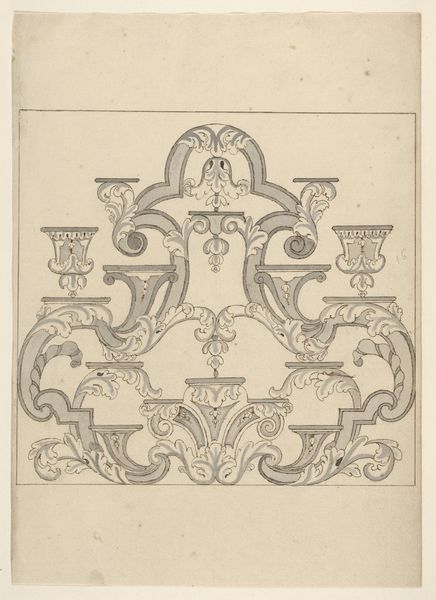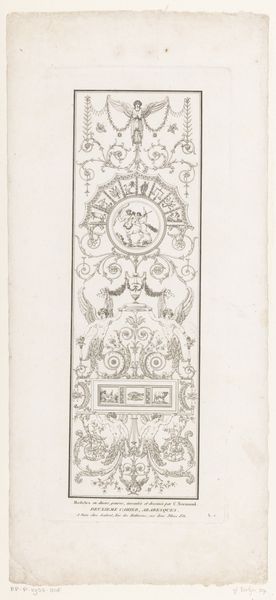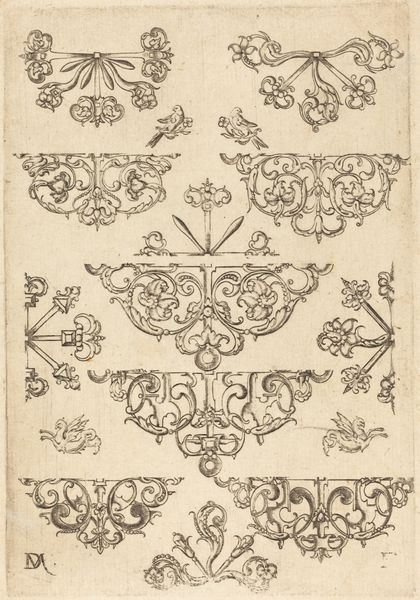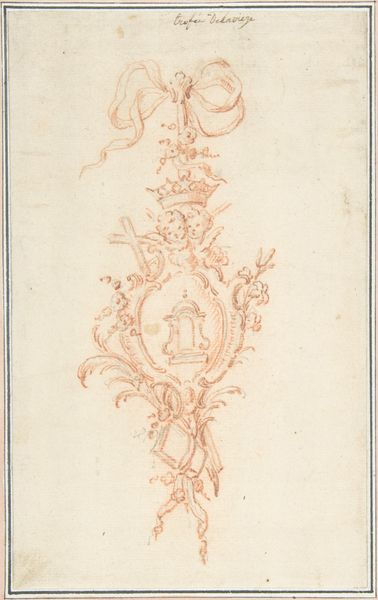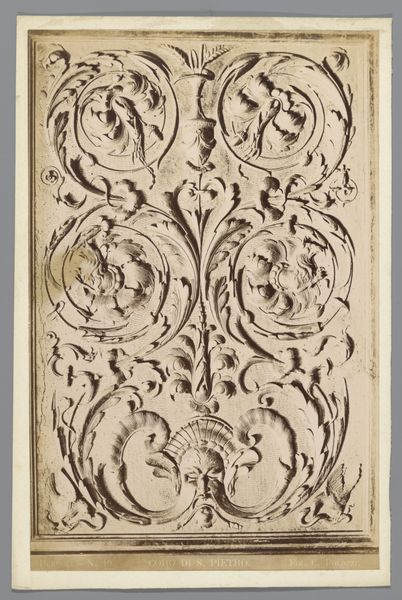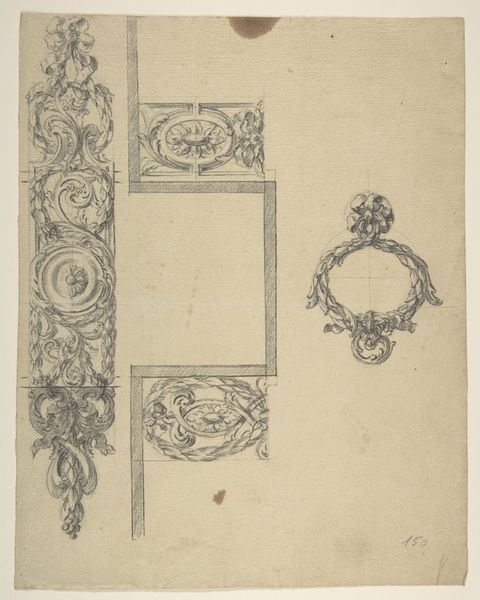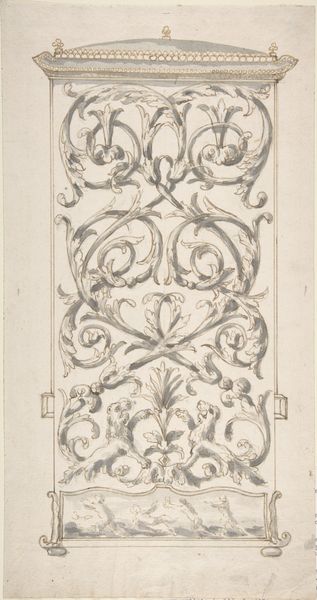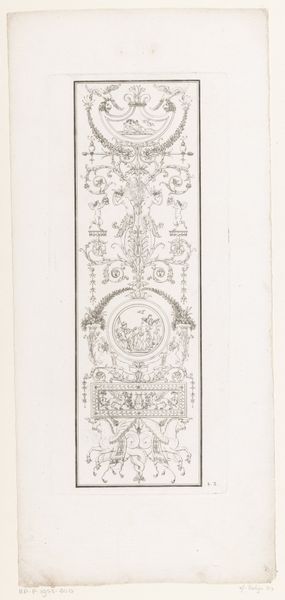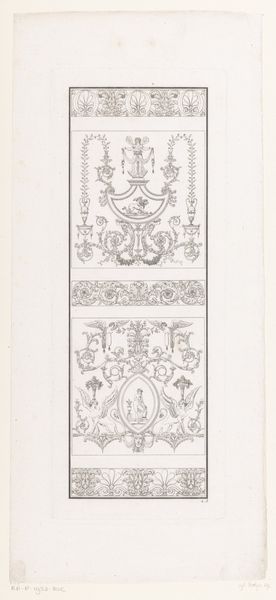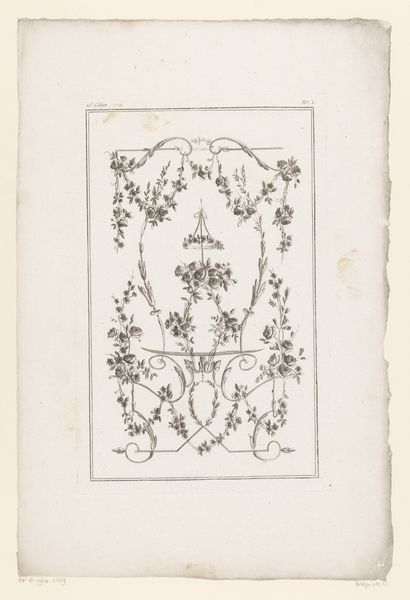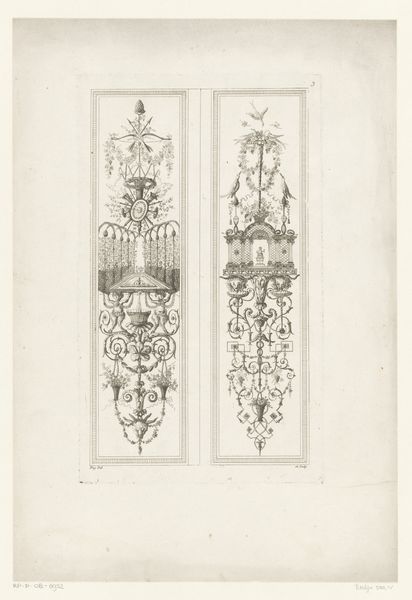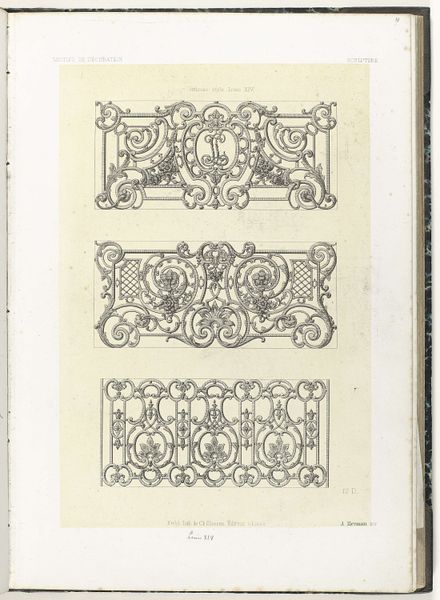
Two designs for decorative motifs featuring cornucopia and rinceaux 1830 - 1897
0:00
0:00
Dimensions: Overall: 19 5/8 x 13 9/16 in. (49.8 x 34.5 cm)
Copyright: Public Domain
Jules-Edmond-Charles Lachaise created these two designs for decorative motifs featuring cornucopia and rinceaux in the 20th century. Lachaise was born in France, where the decorative arts have a long and rich history. These motifs, with their swirling patterns and symbols of abundance, reflect the elegance and opulence associated with French design. These motifs are traditional, yet they also hold complex cultural meanings. The cornucopia, or horn of plenty, is a symbol of prosperity and nourishment, often linked to femininity and fertility. These symbols can evoke both celebration and introspection. As you look at the designs, consider the historical context in which they were created. The early 20th century was a time of great social and political change, including shifting gender roles and class structures. Were these designs intended to reinforce traditional values, or did they offer a more modern interpretation of abundance and beauty? How do these symbols resonate with our own experiences and values today?
Comments
No comments
Be the first to comment and join the conversation on the ultimate creative platform.

